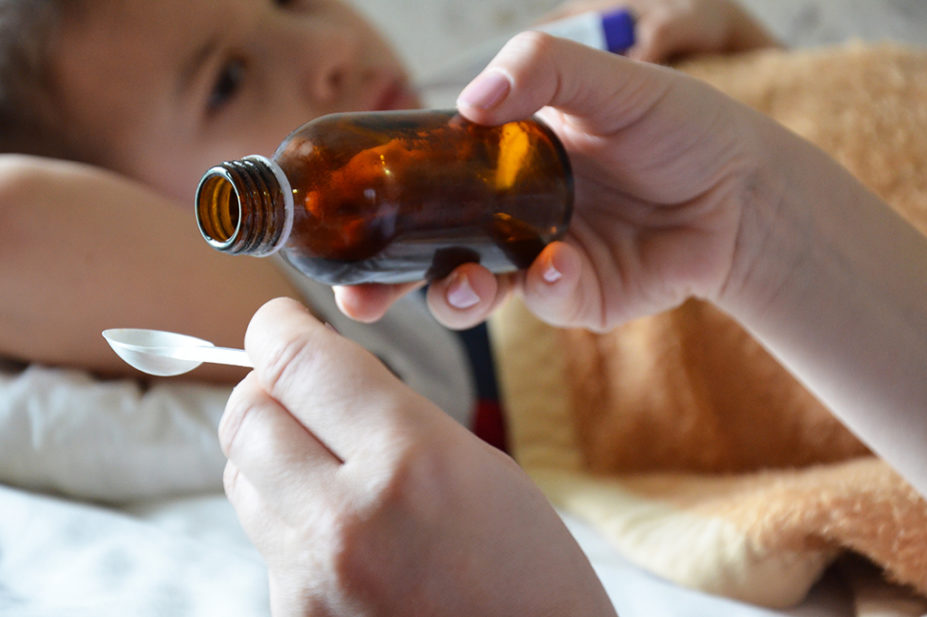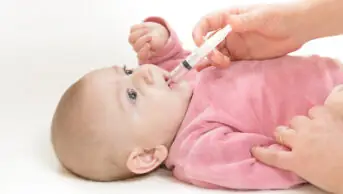
Shutterstock.com
There are signs that antibiotics are being used “excessively” in children aged four years and below, with amoxicillin the most prescribed antibiotic in children in England, say NHS experts.
In a presentation to delegates at the Clinical Pharmacy Congress 2022, Elizabeth Beech, national project lead for antimicrobial resistance for NHS England, said that although prescribing of antibiotics in children aged 0–14 years had decreased significantly between March 2020 and March 2021 — the first year of the pandemic — rates were now rising again quickly.
Beech said the latest figures from February 2022 show that rates of antibiotic prescribing in children aged 0–4 years are now at the highest they have been since December 2017.
She said this had led to “real concern” about excessive use of antibiotics in children aged 0–4 years.
“Prior to the pandemic, in the last 12 months up to March 2020, 3.3 million children aged 0–14 [years] were prescribed at least one antibiotic in primary care in England in that 12 month period,” she told delegates.
“About half of that happened in children aged 0–4 [years]; about 1 in 2 children would have had one or more antibiotic prescriptions in that 12 month period in England — that’s a lot.”
However, she said it was “interesting” to see that, during the first 12 months of the COVID-19 pandemic, antibiotic use in this cohort “pretty much halved”.
The figures, which were taken from the NHS Business Services Authority ePACT2 children’s antimicrobial stewardship dashboard, showed that, during the first 12 months of the pandemic, up to March 2021, 1.8 million children aged 0–14 years were prescribed one or more antibiotics in primary care in England; a 45% reduction in prescribing compared to the 12 months previous.
Of these, 0.7 million children aged 0–4 years were prescribed 0.8 million antibiotics. This is equal to a rate of 227 children per 1,000 population aged 0–4 years, compared to a rate of 494 children per 1,000 population aged 0–4 years old in the 12 months up to March 2020.
“But it’s also worth noting that, in February 2022 — the latest data we have at the moment — that prescribing has not returned to [pre-pandemic] levels, except to those very young children, where it’s actually exceeded pre-pandemic levels,” Beech added.
For children aged 0–4 years, the latest data showed that prescribing has increased to a rate of 534 children per 1,000 population aged 0–4 years; the highest it has been since December 2017.
“There’s some real concern about excessive use of antibiotics in that age group of children,” Beech said, adding that amoxicillin was the antibiotic with the highest population use in children overall.
Steve Tomlin, professional lead at the Neonatal and Paediatric Pharmacists Group, said that while it was “always a concern” to see antimicrobial use trending upwards, it was important to monitor the data closely before “assuming conclusions”.
“Appointments are still difficult to obtain and this is the age group that needs the most safety netting; is the highest risk; and the most [likely] to have fever and childhood illness,” he said. “Thus prescribers will often err on the side of caution in infants and write a prescription if there is any cause for concern.
“With that in mind: a limitation of the data is that it is prescribing not dispensing data, and so what we can’t see is possible advice that was also offered about issuing a prescription [that] then never actually needed to be cashed in.”
Tomlin added that now that social distancing had relaxed, there had been an increase in infections.
“This is coupled with a greater concern of parents if their child has got a fever or respiratory infection opting to seek an appointment with a prescriber where they may not have done pre-COVID,” he said.
The purpose of the antimicrobial stewardship dashboard for children is to allow NHS organisations to see the variation in antibiotic prescribing for children aged 0–14 years; compare antibiotic prescribing rates over time and between organisations; understand how many children are prescribed one or more antibiotics; identify and prioritise opportunities for antimicrobial stewardship improvement; and monitor and report antimicrobial stewardship improvement.
In November 2021, the English surveillance programme for antimicrobial utilisation and resistance report, showed that antibiotic prescribing fell during the pandemic, from 18 defined daily doses (DDDs) per 1,000 population per day in 2019, to 16 DDDs per 1,000 population per day in 2020.
The report said this was driven by a reduction in antibiotics usually prescribed for respiratory infections.


